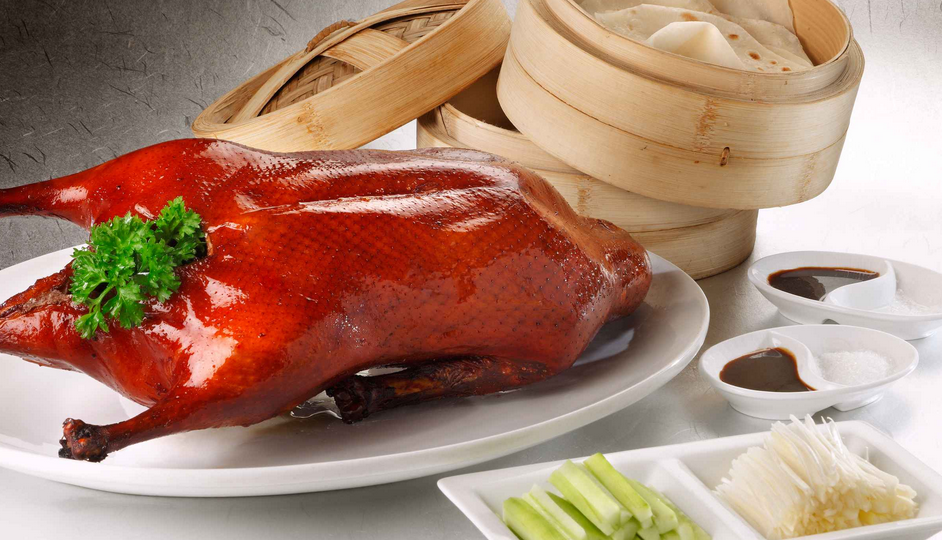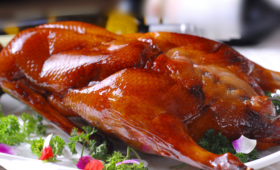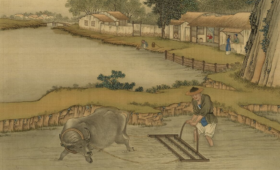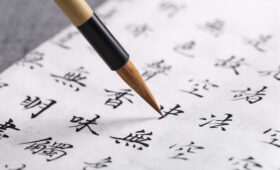Chinese cuisine encompasses the numerous cuisines originating from China,
as well as overseas cuisines created by the Chinese diaspora. Because of the Chinese diaspora and historical power of the country,
Chinese cuisine has influenced many other cuisines in Asia and beyond, with modifications made to cater to local palates.
Chinese food staples such as rice, soy sauce, noodles, tea, chili oil, and tofu, and utensils such as chopsticks and the wok, can now be found worldwide.
The preferences for seasoning and cooking techniques of Chinese provinces depend on differences in social class, religion, historical background, and ethnic groups.
Geographic features including mountains, rivers,forests,
and deserts also have a strong effect on the local available ingredients,
considering that the climate of China varies from tropical in the south to subarctic in the northeast.
Imperial royal and noble preference also plays a role in the change of Chinese cuisine.
Because of imperial expansion and trading,
ingredients and cooking techniques from other cultures have been integrated into Chinese cuisines over time.
Characters of Chinese Cuisine
Chinese cuisine is highly diverse and most frequently categorised into provincial divisions,although these province-level classifications consist of many more styles within themselves.
The most praised Four Great Traditions in Chinese cuisine are Chuan, Lu, Yue, and Huaiyang, representing cuisines of West, North, South, and East China, respectively.
The modern Eight Cuisines of China are Anhui, Guangdong,Fujian,Hunan, Shandong,Sichuan, and Zhejiang cuisines.
Color, scent and taste are the three traditional aspects used to describe Chinese food, as well as the meaning, appearance, and nutrition of the food.
Ten most common local cuisines:
Guangdong Cuisine:
known for its freshness and the tenderness of the meat uses an assortment of birds, freshwater and saltwater fish and snakes.
Guangdong Cuisine:
the extensive selection of ingredients is used in many different ways, green onion is commonly used for seasoning.
Sichuan Cuisine:
Sichuain dishes are renowned for being spicy and the having the flavor of Chinese peppercorns.
Huaiyang Cuisine:
Cooked with care and skill,the food retains the original taste of the ingredients and a subtle taste and skillful presentation of the dishes.
Anhui Cuisine:
typical dishes for this cuisine include smoked duck, Wenzheng Bamboo’s shoots and Feiwang Fish cooked with milk.
Beijing Cuisine:
most known for its roasted duck and its sliced mutton,as well as braised shark’s fin,the food is often varied and delicious.
Hunan Cuisine:
famous for its fledgling chicken dishes, including hot-spiced and peppered Dong’an fledgling chicken,as well as steamed pickled meats.
Zhejiang Cuisine:
the cuisine covers areas ranging from Hangzhou, Ningbo,Shaoxing and Wenzhou.
Fujian Cuisine:
most commonly known for dishes such as fotiaoqiang
a mixture of different ingredients that is so delicious that even Buddha would jump over a wall to get hold of it!
Shanghai Cuisine:
this cuisine often features dishes with a slightly sweet flavor.
Characters of Chinese Cuisine
The three essential factors, by which Chinese cooking is judged, are known as color,aroma and taste.
The color of Chinese food,the first of these factors which is so evident in a Chinese banquet.
Includes the layout and design of the dishes, best exemplified in particular by the large elaborately-prepared cold dishes served at the beginning of the dinner.
Aroma implies more than what’s the nose can detect directly, it also includes the freshness of the raw materials used and the blending of seasoning.
Taste is the art of proper seasoning, though it also involves the texture of the food and fine slicing skills.
These three factors are achieved by the careful coordination of a series of delicate activities,
including selecting ingredients, cutting, mixing flavors,timing the cooking,
controlling the heat and finally,laying out the food on the plate for the table.
Festival Cuisine
Jiao Zi (Chinese Dumplings)
Dumpling is the representative of Chinese traditional food, which is indispensable in Northen China household during the holidays.
Because it is shaped like the ancient Chinese gold or silver ingots, dumpling symbolizes wealth.
In the New Year’s Eve, all family members try to gather to have the reunion banquet.
People may hide a coin in dumpling when they make it, and the people who find the coin will likely to make a fortune in the coming New Year.
Moon cake
Moon cake is the most popular food in Mid-autumn Festival.
It is a kind of cookie with fillings of lotus seed, the yolk of preserved eggs, apricot kernel, olive kernel, green pea, sesame, etc.
Nian Gao (New Year Cake
Niangao is an indispensible food in Chinese New Year for the meaning of thriving in the New Year.
It’s a kind of Chinese cake, made by sticky rice flour and brown sugar, or meat and spring onion.
Tangyuan
Tangyuan is a typical food in Chinese Lantern Festival.
It’s a kind of dumplings in China. The fillings inside the tangyuan are various.
Sesame is the most common filling. There is a slight difference between northern China and southern China.
The filling is salty in northern China, while that is sweet in southern China.




